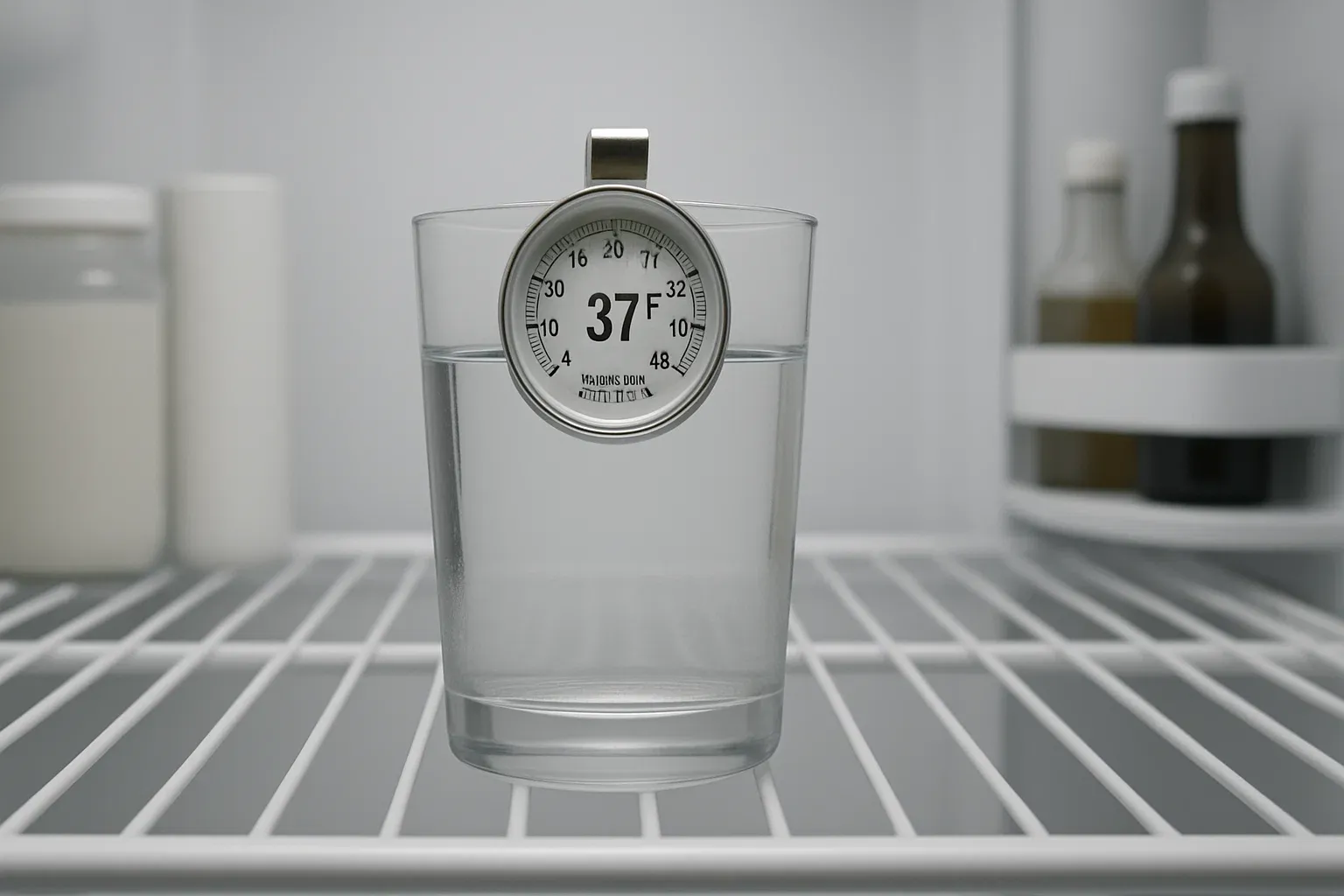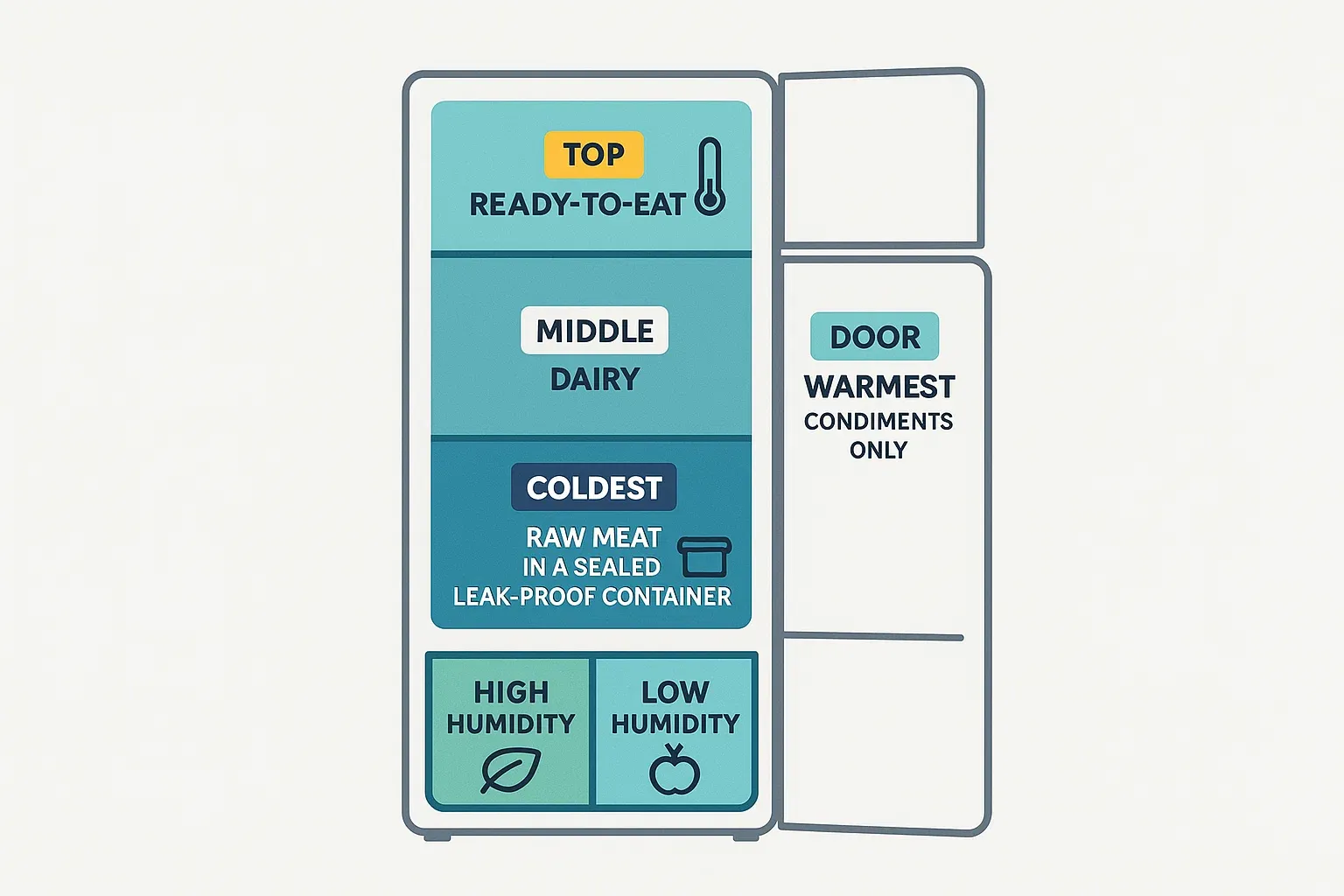Blog

https://www.fda.gov/media/74435/download🥶 What Temperature Should a Refrigerator Be Set To? Sacramento Repair Guide by Fair Appliance Repair
Maintaining the right refrigerator temperature isn’t just about keeping your drinks cold—it’s crucial for food safety, energy efficiency, and avoiding costly repairs. Many homeowners in Sacramento face issues like milk spoiling too quickly, veggies freezing in the crisper, or ice forming where it shouldn’t. So, what’s the optimal setting for your fridge and freezer, and how can you be sure it’s working right?
In this complete, human-friendly guide, Fair Appliance Repair Service walks you through expert recommendations, common questions, brand-specific tips, energy-saving strategies, and local insights—all backed by search data, NLP terms, and Google-trusted sources.
Let’s dive in.
🔍 What Is the Ideal Temperature for a Refrigerator and Freezer?
The ideal refrigerator temperature is at or below 40°F (4°C), and the freezer should remain at 0°F (-18°C). These recommendations are backed by the U.S. Food and Drug Administration (FDA) and are critical for preventing bacterial growth like Listeria, E. coli, and Salmonella — all of which can lead to serious foodborne illnesses.
🔗 FDA: Refrigeration Food Safety Guide
Why Temperature Matters (Explained by Experts)
Keeping your fridge and freezer within the recommended range isn’t just best practice — it’s essential. Here's why:
✅ Reduces food waste: Food lasts longer at the right temp, saving money and reducing environmental impact.
✅ Prevents illness: Dangerous bacteria grow rapidly above 40°F.
✅ Extends shelf life: Dairy, meat, and produce stay fresh longer.
✅ Boosts efficiency: Stable temps help your fridge run smoother, lowering energy bills and maintenance needs.
🧠 Expert Insight: We helped a customer in Sacramento whose fridge averaged 45°F. After resetting the thermostat and cleaning the condenser coils, the fridge stabilized at 37°F — milk spoilage dropped instantly, and the power bill went down by 12%.
🍗 How Temperatures Affect Food (Spoilage, Freezing & Safety Risks)
Understanding how temperature affects food helps you store it safely, reduce waste, and protect your family from serious health risks.
🔬 Why Food Safety Is Linked to Temperature
At above 40°F, harmful bacteria like E. coli, Salmonella, and Listeria multiply rapidly, increasing the risk of foodborne illness.
At below 32°F, sensitive items like lettuce, milk, and eggs can freeze, altering taste, texture, and nutritional value.
🧠 Expert Insight: According to the USDA, bacterial growth doubles every 20 minutes when food is kept above 40°F. Keeping a consistent safe temperature is not optional—it's a core food safety principle.
🛠️ Real Case from Sacramento:
We worked with a client in the South Natomas area who unknowingly stored raw chicken on the top shelf. Juices leaked onto strawberries and greens below. To make things worse, the thermostat was off—running at 43°F.
After our visit, we:
Adjusted their fridge to 37°F
Reorganized shelf zones by food category
Added a thermometer for monitoring
This simple setup reduced spoilage and eliminated contamination risk.
📌 Pro Tip: Always store raw meat on the bottom shelf in leak-proof containers to avoid drip contamination.

⚠️ Is Your Fridge Too Warm or Too Cold? Here's How to Tell
Sometimes your fridge gives you clues—long before your food spoils or energy bills spike. Spotting early warning signs is essential to prevent waste and avoid costly repairs.
👀 Key Warning Signs:
🥛 Milk spoils early — even before the printed expiration date.
🥬 Vegetables freeze inside the crisper drawer.
💧 Condensation or frost buildup along the back interior wall.
❄️ Ice crystals on fresh produce or packaged leftovers.
🧊 Freezer items are soft or not fully frozen.
📌 Pro Tip:
Place an appliance thermometer in a glass of water on the middle shelf, leave it for 24 hours, and review the reading. This method gives a true average temperature unaffected by air bursts or door openings.
📂 What Do Fridge Temperature Settings 1 to 7 (or 9) Actually Mean?
Fridge dials aren’t always clear. Some models use 1–5, others 1–7, or even 1–9. Typically:
1 = Warmest
9 = Coldest
User Confusion Examples:
“Is 1 colder than 5 on my Whirlpool fridge?”
“Which number to use on a Frigidaire for milk?”
Most manuals clarify this, but if you’re unsure:
Look for arrows or snowflake icons
Use a thermometer to test your assumption
🧠 Pro Tip: For Whirlpool or Frigidaire units, set to 4 or 5 initially and adjust based on food freshness.
📚 Whirlpool Temperature Settings Guide
🧰 How to Adjust Refrigerator Temperature (Step-by-Step)
Analog/Dial-Based Fridge:
1. Turn the dial to midpoint (e.g. 4 on 1–7 scale)
2. Wait 24 hours and check temp with thermometer
3. Adjust up or down gradually until stable at 37°F
Digital Thermostat Models:
1. Press “Fridge Temp” or “Settings”
2. Set desired temp (between 35°F–38°F)
3. Confirm using a thermometer after 12–24 hours
Client Case in Carmichael:
A customer thought “1” meant coldest. Their food kept spoiling. After resetting to 5 and waiting 24 hours, the internal temp dropped from 47°F to 37°F, solving the problem instantly.
🔧 Reminder: Don’t trust digital panels alone. Internal thermometers are more accurate.

🥬 Best Practices for Different Fridge Zones
Organizing your fridge by zones helps prevent temperature fluctuations and cross-contamination.
Zone-by-Zone Breakdown:
Top Shelf: Ready-to-eat foods like leftovers and drinks (moderate temp)
Middle Shelf: Dairy products like milk, yogurt, and cheese (stable temp)
Bottom Shelf: Raw meats and seafood (coldest zone)
Crisper Drawers: Fruits and vegetables; use humidity controls
Door Shelves: Condiments, juice, and items less sensitive to temp swings (warmest area)
💡 Expert Tip: One of our Sacramento clients had vegetables freezing in the crisper. We found they mistakenly set the fridge to 7 and didn’t enable humidity control. Adjusting to 4 and setting crisper to high humidity fixed the issue.
⏳ How Long Does It Take for a New Fridge to Cool?
When you install a new refrigerator, patience pays off. Most modern units require 12–24 hours to reach safe food storage temperatures. Rushing to stock it early can lead to waste and health risks.
🧊 Temperature Targets Before Loading Food:
✅ Refrigerator section should reach ≤ 40°F (4°C)
✅ Freezer section should reach 0°F (-18°C) or below
Based on my 10 years servicing all major refrigerator brands, this delay isn’t a flaw—it’s how compressors and evaporators gradually stabilize internal climate without overwhelming energy draw. Some French door models cool faster; older single-door units take longer.
Adding groceries too soon—especially meat, dairy, or eggs—can result in bacterial growth, poor texture, and early spoilage. I always recommend verifying temperatures with a thermometer, not by feel alone.
📌 Pro Tip:
To speed up cooling, keep doors shut, reduce ambient room heat, and avoid placing warm items inside during the first 24 hours.
📅 How Often Should You Check Your Fridge Temperature?
Temperature consistency is critical for both food safety and appliance efficiency. As a technician with over 10 years of experience, I’ve seen minor temperature drifts result in major food spoilage—all because no one checked the internal climate.
🧪 Best Practice Monitoring Routine:
✅ Check with a standalone appliance thermometer once per month
✅ After power outages, especially during summer
✅ If you notice spoiled milk, frozen vegetables, or soft freezer items
While most modern refrigerators display temperatures on digital panels, these are often sensor-based estimates, not actual food-level readings. For reliable accuracy, I always recommend placing a thermometer in a glass of water on the middle shelf.
📌 Pro Tip:
Avoid relying solely on factory settings. Ambient kitchen temperature, door openings, and even overstuffed shelves can shift interior conditions by several degrees.
🚑 Common Refrigerator Temperature Problems (And Fixes)
Refrigerator temperature issues often go unnoticed until they affect food safety or energy efficiency. As someone who's repaired hundreds of units across all major brands, I can confirm that most issues stem from a handful of predictable causes.
🔧 Common Causes and Fixes:
✳ Faulty Thermostat – If your fridge stays too warm or fluctuates wildly, the internal thermostat might be inaccurate. Use a thermometer to compare readings, and replace if needed.
✳ Blocked Air Vents – Overpacking the fridge or misplacing large containers near air outlets can disrupt airflow, causing uneven cooling. Rearranging items often solves this.
✳ Dirty Condenser Coils – Dust-covered coils reduce efficiency, causing your fridge to run hot. I recommend cleaning coils every 6 months using a soft brush or vacuum.
✳ Damaged Door Seals – Cracks or gaps in door gaskets let warm air seep in. Test with the paper slip method: if it slides out easily, it's time to replace the seal.
✳ Faulty Evaporator Fan – If the freezer is cold but fridge isn't, a broken evaporator fan could be the culprit. It’s one of the more common service calls I handle.
✳ Control Board Failure – On high-end models, if all else checks out, temperature inconsistencies might trace back to a malfunctioning control board.
📊 Brand-Specific Refrigerator Temperature Settings (Whirlpool, GE, Frigidaire, Samsung...)
Different brands use slightly different systems when it comes to temperature control settings. Here’s a breakdown based on service history, manufacturer recommendations, and common user questions:
🔹 Whirlpool Refrigerator Temperature Settings
✅ Default Range: Settings 1 to 7; 7 is coldest
✅ Recommended: Keep set at 4 or 5 for regular use
For Whirlpool double door models, ensure freezer setting complements fridge setting for balanced airflow
🔹 GE Refrigerator Settings (Side-by-Side & French Door)
✅ Digital Models: Set fridge to 37°F, freezer to 0°F
✅ Manual Dials (1–9): 5 is usually the midpoint (start here, adjust as needed)
Search term: "how to set temperature on GE French door refrigerator"
🔹 Frigidaire Temperature Controls
✅ Settings 1 to 7: 7 being coldest
Many customers ask about “setting temperature on Frigidaire refrigerator”—start at 4, monitor for 24 hours
Check crisper drawer zones separately (humidity control matters!)
🔹 Samsung Refrigerator Settings
✅ Touch Display Models: Default 3°C (37.4°F) for fridge, -19°C (-2.2°F) for freezer
Query match: “how do you set the temperature on a Samsung refrigerator”
Avoid frequent changes; allow 6–8 hours between adjustments
🧠 Pro Experience Tip:
Regardless of brand, I always recommend using a standalone appliance thermometer in both the fridge and freezer. Built-in sensors vary by model and may not reflect actual food safety conditions.
📍 Why Choose Fair Appliance Repair in Sacramento?
With over a decade of experience servicing refrigerator brands like Whirlpool, Samsung, GE, Frigidaire, and Bosch, we’ve helped homeowners across Sacramento, Antelope, Citrus Heights, Roseville, Carmichael, and beyond.
Whether your fridge is freezing vegetables or your freezer won’t stay cold, our team brings expert diagnosis, fast fixes, and honest pricing.
🛠️ Our Specialized Refrigerator Services Include:
✅ Thermostat calibration and replacement
✅ Control board troubleshooting and repair
✅ Evaporator and fan motor repair
✅ Condenser coil cleaning for cooling efficiency
✅ Door gasket/seal testing and replacement
We're committed to energy-efficient solutions that restore proper cooling, reduce spoilage, and extend appliance life. You can reach out to Refrigerator Repair Service.
📞 Call Today: +1 916-333-8388
📍 Coverage Area: Greater Sacramento including Elk Grove, Rocklin, North Highlands, and Fair Oaks
❓ Frequently Asked Questions About Fridge Temperature
Q: Is 1 or 5 colder on a fridge?
A: In most models, 5 is colder. Dial numbers increase coldness. Always confirm with your manual.
Q: Can my fridge stay in the garage during winter?
A: Only if it’s garage-rated. In cold weather, the compressor may stop cycling, leading to freezer thawing.
Q: How many degrees should a fridge fluctuate?
A: Ideally within ±2°F. Larger swings can signal thermostat or seal issues.
Q: What is the best setting for energy savings?
A: 37°F for fridge, 0°F for freezer. Clean condenser coils and check door seals for max efficiency.


























